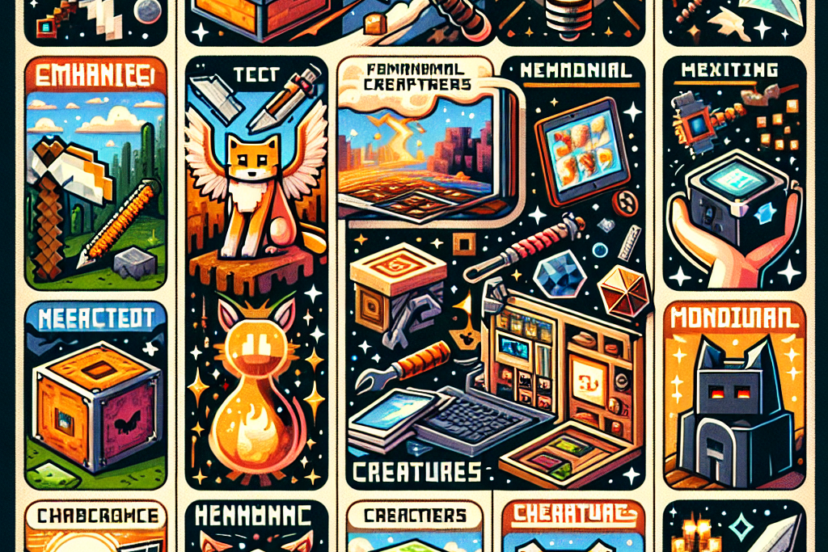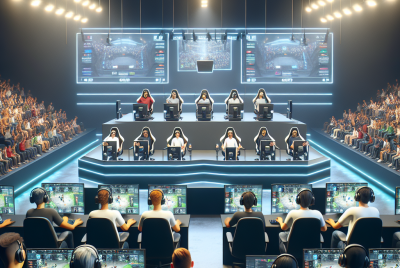Exploring the Potential of Virtual Reality in Gaming
Understanding Virtual Reality Technology
The Basics of Virtual Reality
Virtual Reality (VR) refers to a simulated experience that can be similar to or completely different from the real world. It typically involves the use of a headset and sometimes additional equipment like gloves or handheld controllers that track movements. When a user puts on a VR headset, they are transported to a digital environment where they can interact with objects and navigate through space. This immersion creates the potential for unique gaming experiences that traditional gaming platforms can’t match.
The Hardware Behind VR
To truly experience virtual reality, players need hardware that can support the technology. This can range from high-end setups like the Oculus Rift, HTC Vive, or PlayStation VR, to more accessible options like standalone headsets like the Oculus Quest. Understanding the specifications and capabilities of different VR headsets can significantly impact the gaming experience, as factors like resolution, field of view, refresh rate, and tracking accuracy play crucial roles in the level of immersion achieved.
VR gaming requires substantial graphical output and processing power. As a result, gamers often need robust gaming PCs or consoles capable of running sophisticated VR software. The development of graphics technology has allowed for more realistic environments and interactions, but it still presents a challenge for both developers and players.
Accessories and Enhancements
In addition to headsets, a range of accessories can enhance the VR gaming experience. Hand controllers provide tactile feedback and allow for more complex interactions within the virtual environment. Motion sensors can track a player’s movement, enabling them to walk around and act naturally within the game. Other accessories, such as haptic feedback vests and treadmills, further increase immersion, allowing players to feel the game in ways that traditional gaming cannot replicate.
The Impact of VR on Game Design
A Shift in Game Mechanics
The introduction of VR into the gaming industry has necessitated a shift in the design and development of games. Traditional mechanics, such as point-and-click or joystick navigation, have evolved to accommodate the immersive nature of VR. Game developers are now creating experiences that leverage movement, gesturing, and spatial awareness, making interactions more natural and intuitive.
Creating Immersive Narratives
VR offers game designers a unique opportunity to construct deeply immersive narratives. In a VR game, players don’t just witness a story—they live it. This level of engagement can create a more emotional and impactful experience. Game creators are beginning to experiment with branching storylines that respond to players’ actions in real-time, adding another layer of depth to storytelling.
Emotional Engagement through VR
One of the strengths of VR gaming is its ability to evoke emotions. Players often report feeling a heightened sense of empathy when fully immersed in a VR environment, reacting to situations as they would in real life. This emotional engagement can lead to memorable experiences that resonate with players long after they’ve taken off their headsets.
The Importance of World-building
A well-crafted virtual world is essential for VR games. Developers must consider every detail, from environmental sounds to visual aesthetics, to create a convincing and captivating universe. Effective world-building invites players to explore, interact, and become part of the game, enhancing the overall experience.
The Genres Benefiting Most from VR
Action and Adventure Games
Action and adventure games are among the most popular genres in VR. The thrill of engaging in combat, solving puzzles, or exploring vast terrains becomes even more exhilarating when players feel physically present in the virtual world. Titles like “Beat Saber” and “Half-Life: Alyx” have set the standard for what these experiences can offer, combining fast-paced action with immersive environments.
Simulation Games
Simulation games are also making significant strides in virtual reality. These games often aim to replicate real-world experiences, and VR enhances that realism drastically. Whether it’s flying a plane, driving a car, or managing a farm, VR allows players to engage with their simulated environment on a level that feels genuine. Games like “Job Simulator” and “Microsoft Flight Simulator” exemplify how VR can transform simulation into an immersive activity.
Horror Experiences
Horror games have found a unique niche in VR. The immersive nature of VR can amplify fear and suspense, making even the most benign environments feel intense. Titles like “Resident Evil 7” showcase how VR can create tension that traditional gaming platforms struggle to replicate. Players often find their heart rates rising as they feel the reality of horror-infused settings.
Puzzle Games
Puzzle games are also well-suited for VR, as they can leverage spatial awareness and tactile responses from players. Immersive puzzle games allow players to manipulate objects in a physical space, creating engaging challenges that require both logical thinking and dexterity. Games like “The Room VR” blend intricate puzzles with stunning visuals, creating an experience that’s both beautiful and mentally stimulating.
Social Interaction in VR Gaming
The Rise of Multiplayer VR Experiences
Social interaction is a crucial part of gaming, and VR offers unique opportunities for multiplayer experiences. In a virtual world, players can meet, interact, and cooperate in ways that enhance the communal aspect of gaming. Games like “Rec Room” and “VRChat” create social spaces where players can hang out, play games together, and even participate in events, much like a physical community would.
Community Building
The potential for community building in VR is immense. Players can establish friendships and collaborative efforts, engaging in activities and challenges that promote teamwork. These connections can feel more profound thanks to the shared experiences and presence that VR offers, potentially leading to lasting relationships that extend beyond the game itself.
Live Events and Experiences
As VR technology continues to develop, the concept of virtual live events is gaining traction. Imagine attending a concert, sports event, or art gallery in a virtual space with other attendees from around the world. This not only expands access to events but also creates new revenue models and experiences for creators and audiences alike. The thrill of experiencing a live event in a virtual space is a captivating prospect for both gamers and non-gamers.
Challenges and Limitations of VR in Gaming
Physical Space Requirements
While VR can create highly engaging experiences, it often requires a dedicated physical space for optimal use. Players need room to move around and interact with their environments. This requirement can limit accessibility for those without large spaces available, creating a barrier to entry for many potential gamers.
Motion Sickness and Discomfort
Another challenge VR faces is the issue of motion sickness. Some users may experience nausea or discomfort while using VR headsets due to various factors such as frame rates, field of view, or even the intensity of the visuals. Developers are continually researching ways to minimize these effects, but it remains a consideration for many gamers, particularly those who are new to VR.
Cost of Entry
The financial investment required to fully experience VR gaming can be daunting. High-quality headsets, compatible hardware, and accessories can add up quickly. This cost may deter some players from diving into VR despite its many advantages and experiences. Developers and hardware manufacturers are working to create more affordable options to make VR gaming accessible to a broader audience.
Content Availability
While the catalog of VR games is growing, the overall selection is still limited compared to traditional gaming. Many developers are still figuring out how to successfully leverage VR technology, leading to an uneven quality of available titles. Ensuring a steady stream of quality content will be crucial for the sustained growth of the VR gaming market.
The Future of Virtual Reality in Gaming
Continued Technological Advancements
As technology evolves, we can expect significant advancements in VR gaming. Improvements in hardware, such as better resolution, lower latency, and more comfortable designs, will likely enhance the user experience. Innovations like eye-tracking and wireless technology are set to further improve immersion and usability, breaking down barriers for new players.
Broader Applications Beyond Gaming
Looking forward, the applications of VR technology may extend beyond gaming. Industries such as education, healthcare, and training are exploring the potential of VR to create engaging learning environments and simulations. As these applications develop, we could see a convergence of gaming with other fields, offering new experiences and uses for VR.
Integrating VR with Augmented Reality
The integration of virtual reality with augmented reality (AR) may also shape the future of gaming. By blending virtual elements with the real world, the possibilities for creative gameplay expand even further. This could lead to hybrid experiences that leverage the strengths of both technologies, providing new and exciting ways for players to engage.
The Role of Community and User-Generated Content
Finally, the role of community and user-generated content can not be overlooked. As platforms like Roblox and Dreams demonstrate, empowering users to create and share their own experiences can drive interest and participation. Encouraging users to design their own VR games or environments may lead to a wealth of creativity that enriches the VR ecosystem as a whole.
In this exploration of virtual reality’s potential in gaming, it’s clear that we’re only at the beginning of this exciting journey. The immersive experiences, emotional engagement, and social interactions offered by VR are changing the landscape of gaming—setting the stage for a future that promises even more extraordinary adventures.




